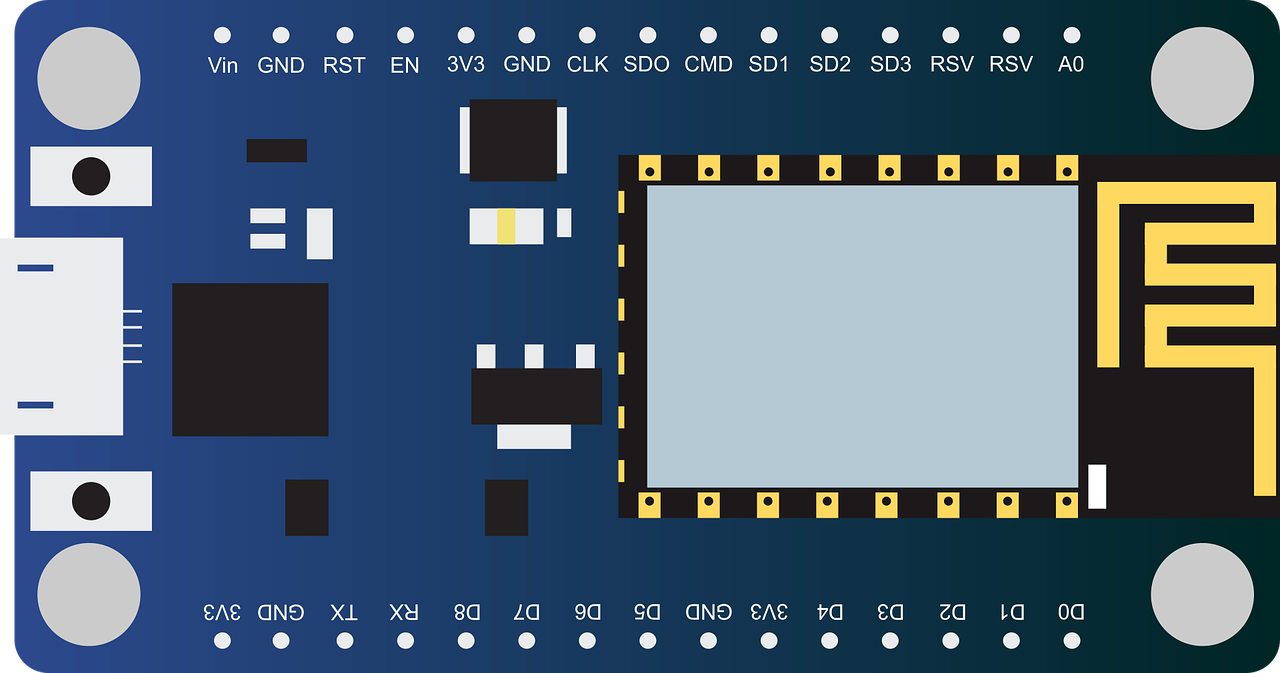Controller
A controller is a device or system that manages and controls the behavior of a robot. It receives input from sensors and provides output to actuators to ensure the robot moves or behaves in a specific way.
Controllers are essential for ensuring that a robot operates safely, efficiently, and effectively. They can be simple or complex, depending on the complexity of the robot and the tasks it is designed to perform. For example, a simple controller might be used to control the motion of a small robot that moves in a straight line, while a more complex controller might be used to manage the movements of a larger robot with multiple arms and sensors.
There are different types of controllers used in robotics, such as:
- Microcontrollers: These are small computers that are embedded within the robot itself. They can receive input from sensors, process data, and provide output to actuators, all in real-time. Microcontrollers are often used in small, simple robots.
- Programmable Logic Controllers (PLCs): These are specialized computers that are designed to control industrial machinery, including robots. They can manage multiple inputs and outputs, and are often used in large, complex robotic systems.
- Robot Operating System (ROS): This is an open-source platform for programming robots. It provides a range of tools and libraries that enable developers to create and manage the behavior of robots, including controllers.
In summary, a controller is a device or system that manages and controls the behavior of a robot. It receives input from sensors and provides output to actuators, ensuring that the robot moves and behaves in a specific way. Different types of controllers are used depending on the complexity of the robot and the tasks it is designed to perform.
Glossary
| English | Spanish | Example Sentence (English) |
|---|---|---|
| Actuators | Actuadores | "The robot's actuators responded to the controller's commands, enabling precise movements." |
| Behavior | Comportamiento | "The controller dictated the robot's behavior, ensuring it followed the desired operating parameters." |
| Complexity | Complejidad | "The controller's design varied based on the robot's complexity and the tasks it needed to accomplish." |
| Computers | Computadoras | "Microcontrollers and PLCs are types of computers used as controllers in robotics." |
| Control | Control | "The controller's main function was to control the robot's actions and responses to the environment." |
| Efficiency | Eficiencia | "The advanced controller improved the robot's efficiency by optimizing its movements and power usage." |
| Embedded | Incorporado | "Microcontrollers are embedded within the robot's structure, enabling real-time control." |
| Input | Entrada | "The controller processed the input from various sensors to make informed decisions." |
| Manage | Gestionar | "The controller was responsible for managing the robot's operations and maintaining its performance." |
| Microcontrollers | Microcontroladores | "Small robots often rely on microcontrollers as their primary controllers due to their compact size." |
| Movements | Movimientos | "The controller coordinated the robot's movements with precision and smoothness." |
| Multiple | Múltiple | "Complex robots with multiple arms and sensors required a sophisticated controller for coordinated control." |
| Open-source | Código abierto | "ROS, an open-source platform, provided flexible and accessible tools for robot behavior control." |
| Output | Salida | "The controller generated output signals to direct the actuators and influence the robot's behavior." |
| Platform | Plataforma | "ROS served as a powerful platform for developing and implementing robot controllers." |
| Programmable | Programable | "PLCs offered a programmable solution for controlling complex robotic systems in industrial settings." |
| Real-time | Tiempo real | "Microcontrollers processed sensor data and produced real-time control signals for immediate robot response." |
| Receive | Recibir | "The controller could receive and interpret signals from various sensors to make informed decisions." |
| Robotic systems | Sistemas robóticos | "PLCs were commonly used in large robotic systems for managing multiple actuators and sensors." |
| Sensors | Sensores | "The controller relied on sensors to gather information about the robot's environment and conditions." |
| Simple | Simple | "A simple controller sufficed for the basic motion control of a small line-following robot." |
| Tasks | Tareas | "The controller assigned specific tasks to different actuators, enabling coordinated robot behavior." |
| Tools | Herramientas | "ROS provided a rich set of |
